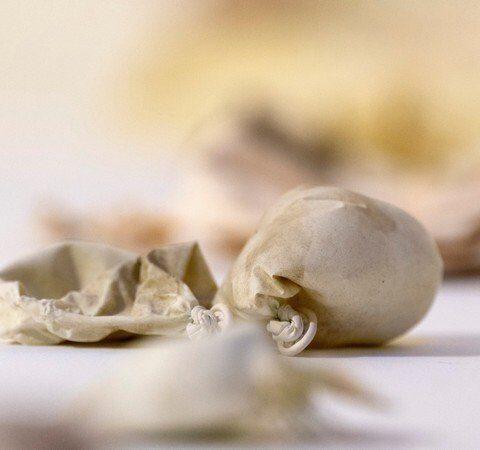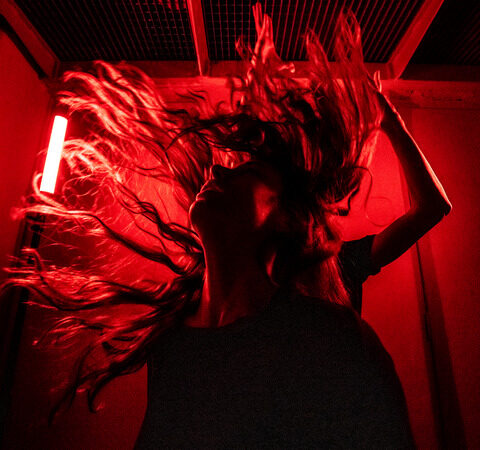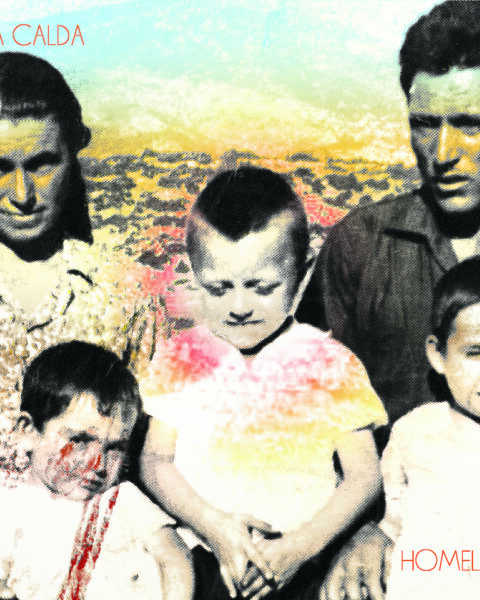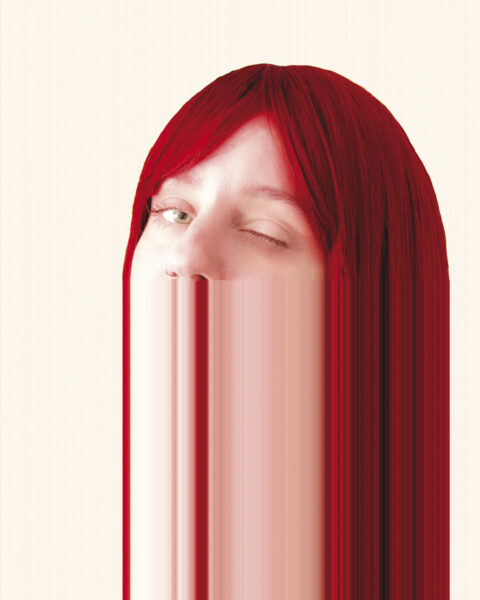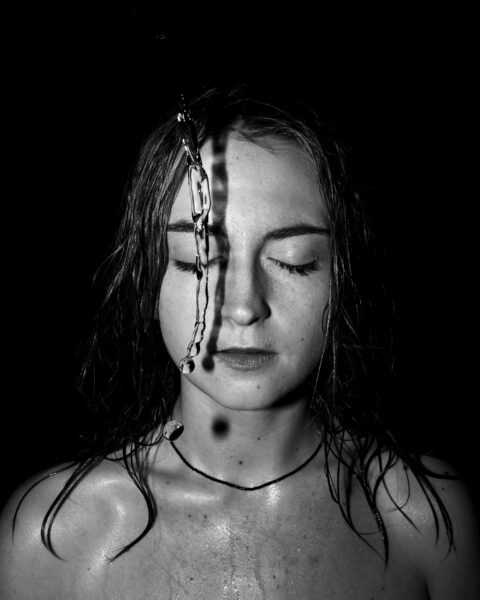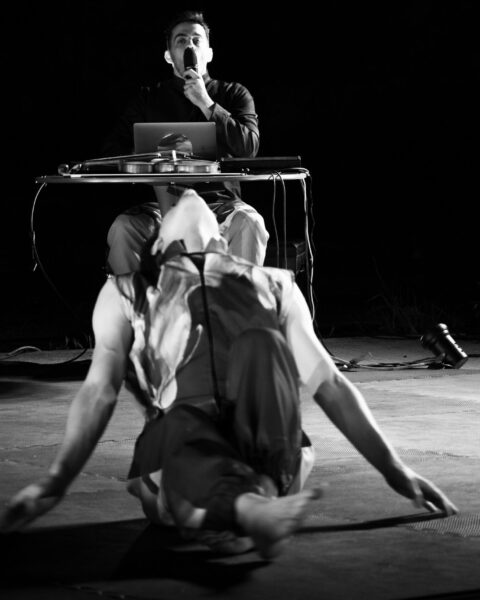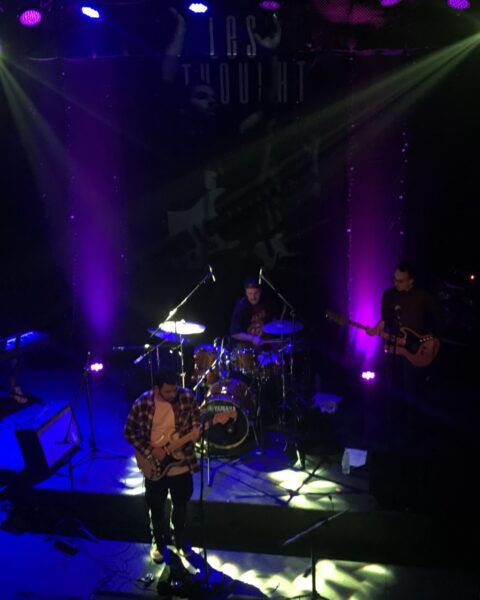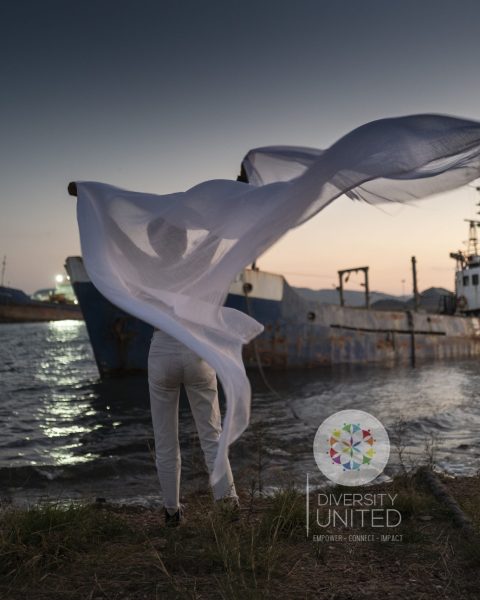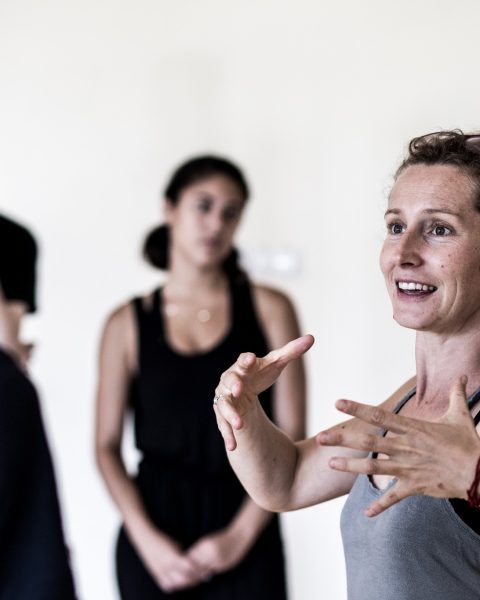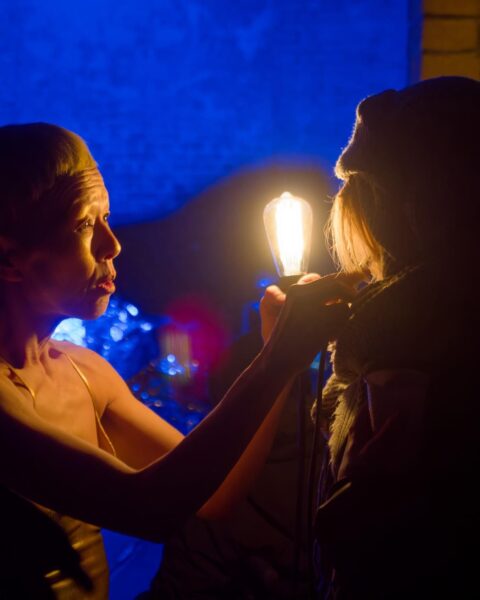
The internationally renowned performer and choreographer of Butoh, Yuko Kaseki, is coming to Athens together with avant-garde composer musician and performer Kriton Beyer at the invitation of performer and choreographer Vickys Filippa and the Quantum Body Athens Butoh Dance Group.
On Saturday, April 27, PLYFA is transformed into a live sound, lighting and kinetic installation, exclusively inspired by the space itself and vibrating to the rhythms of Butoh, with DIY dark instruments, live electronics and real time responsive lighting.
The three artists will explore the relationship of sound, light and movement based on butoh, as well as the phenomena of (inter)connections, transmission and maximization of the senses aiming at synaesthesia — building live, a bridge, composed power of all these elements, not only for to cross it themselves but to (pro)invite the public to cross this bridge with them.
In the performance “Crossing the LIGHTbridge”, handmade instruments made by Kriton Beyer will be used. His main instrument, the Daxophone, is a dark electric wooden experimental musical instrument, inspired by the original construction plans of its inventor Hans Reichel, slightly adapted to suit Kriton’s aesthetic temperament. Alongside the daxophone, Kriton controls a large number of lamps, fluorescent tubes and projectors in real-time, which are connected to a specially developed proprietary, pedal-like light control system.
Kriton Beyer is a Greek-German musician and composer, who – as a performer and improviser – works mainly with the harmonium and daxophone. He studied musicology in Greece where he collaborated with various local music groups as well as musicians such as Sakis Papadimitriou and Floros Floridis. In 2004 he moved to Berlin, where he was heavily involved in the improvisational music scene of the city.
Since then he has collaborated with many musicians such as Phil Minton, Audrey Chen, Steve Noble, Fred Lonberg-Holm, Axel Dörner, Liz Kosack, Kresten Osgood, Tristan Honsinger, Tomomi Adachi, Richard Scott, Willi Kellers, Matthias Bauer, Antonis Anissegos, Olaf Rupp, Alexei Borisov, Els Vandeweyer, Harri Sjöström, Nicola Hein and Liz Allbee, dancers such as Yuko Kaseki and visual artists such as Akiko Nakayama. Kriton Beyer founded ‘FRAGMENTATION ORCHESTRA’, is a member of the electro-acoustic music trio ‘Uproot’ and the bands ‘Redox Reaction’ and FDBK EXPT.
In his harmonium work, Kriton Beyer uses both the natural sound of the instrument and ‘traditional’ playing techniques as well as preparations, objects and extended playing techniques, while his daxophone playing is characterized by a very personal musical and sonic aesthetic and unconventional playing technique, sometimes supported by the subtle use of electronics. As an improvisational musician, he has performed throughout Europe. His compositions are usually characterized by conceptualism.
Kriton Beyer has also designed and commissioned CinePrompt® music software, which was developed specifically for use in live music performance and live film recording.
Kriton Beyer also curates and manages the concert series and record label “THE PROCRUSTEAN BED”, dedicated to Experimental & Improvisational Music.
www.kritonbeyer.com
Yuko Kaseki is a director, choreographer, teacher and Butoh dancer from Japan based in Berlin. Her artistic research focuses on finding mediums that unite the spiritual with the physical, and every day she trains her perception to find intersections between the unusual and the familiar.
Website
She studied Butoh dance and Performing Art at HBK Braunschweig with Anzu Furukawa and danced in Dance Butter Tokio’s company and Verwandlungsamt in 1989-2000.
In 1995, Yuko Kaseki and Marc Ates founded the cokaseki dance company. cokaseki is an ensemble for performative research around dance, visual arts and experimental music in live events and improvisations in theatre, gallery, venue and film… Since then various members have joined the group in different roles and shifting creative responsibilities. There have been collaborations in numerous international projects with performers such as Christine Bonansea, Sherwood Chen, Megumi Eda, Shinichi Iova Koga, 4RUDE, Minako Seki, Lisa Stertz, Valentin Tszin, Teo Vlad, musicians such as Antonis Anissegos, Kriton Beyer, Audrey. Chen, Contagious, Kirikoo Des, Axel Dörner, Echo Ho, Emilio Gordoa, miu, Nguyễn + Transitory, Yasumune Morishige, Olaf Rupp, Tot Onyx, Sasha Pushkin, SEQUOIA, Kazuhisa Uchihashi, Xenon, and visual artists such as Nikhil Chopra,
Morvarid K, Sarane Lecompte, Arata Mori, Justin Palermo, Chiharu Shiota, Peter Zach and others.
Solo and ensemble performances, collaborations and improvisations are performed throughout Europe, Georgia, Turkey, Russia, Japan, Taiwan, Korea, Malaysia, Thailand, Indonesia, India, Burkina Faso, Canada, Mexico, Brazil, Chile, Uruguay, Argentina, Australia , and the USA.
These works are accumulations of poetic and vivid images that embody the spirit of Butoh, and her interpretation aims to reflect the existence of openness.
Her strong interest in breaking the boundaries of physical expression leads to inclusive works with mixed artists such as Theater Thikwa (Berlin), Roland Walter (Berlin), Sung Kuk Kang (Seoul), Zan-Chen Liao (Taipei).
Yuko Kaseki has been performing and hosting the ‘AMMO-NITE GIG’ improv series (vol. 1-48 and on) with international performers and musicians since 2004.
Nominations/Awards:
– “Ame to Ame” won “Best Ensemble Performance” and was nominated for “Best Choreography”, – “Best Composition”, “Best Visual Design”, 2004 Isadora Duncan Dance Award in San Francisco, USA.
– “c(H)ord” collaboration with inkBoat received “Out standing Achievement in Performance-Company”, 2009 Isadora Duncan Dance Award in San Francisco, USA.
– “Tooboe” was nominated for “Outstanding Production”, The 2007 Dora Mavor Moore Awards in Toronto, Canada.
– “To” Collaboration with Tableau Stations nominated for “no-ballet, International Dance Competition 2012”, Ludwigshafen, Germany.
– “Let My Fish Loose” nominated for “no-ballet, International Dance Competition 2007”, Ludwigshafen, Germany
– “Kudan” was nominated for the “Toyota Choreography Award 2004” in Tokyo, Japan.
Vicky Philippa is a dancer, choreographer and teacher of butoh, one of the few representatives of the genre in Greece. From 2008 until today, she has been intensively teaching, directing and choreographing, presenting her works in Greece and abroad, while organizing seminars and performances with international artists and teachers of the genre with whom she has entered into several important collaborations.
He has studied, among many others, with the masters of the genre: Yumiko Yoshioka, Valentin Tszin, Koseki Sumako, Yuko Kaseki, Sainkho Namtchylac, Atshushi Takenouchi, Katsura Kan, Imre Thormann, Espartaco Martinez, etc.
In 2015 he founded the performing arts group Quantum Body Ahens Butoh Dance Group, which over the years has developed into a butoh community in the heart of Athens, counting over 40 permanent members and is one of the largest butoh groups worldwide. It is an independent group that with its actions tries to transmit the radical practices and aesthetics of butoh and bring the Greek public into greater contact with the genre, while building bridges of cooperation with foreign artists. Her vision is to contribute to the alternative scene of Athens by creating a new vocabulary, kinesiology, acting and speech called “quantum body”. The group is supported by its members and by the people who follow it in its actions.
Finally, she has studied mathematics, graduating from the University of Crete and then continued her studies at postgraduate level in the field of Bioinformatics and is a PhD candidate at the Medical School of Athens.
